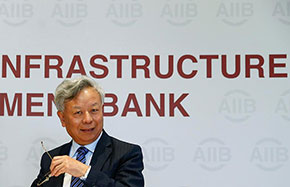Experts say Moody's downgrading of China's credit rating shows miscalculations
BEIJING - Moody's Investors Service on Wednesday downgraded China's long-term local currency and foreign currency issuer ratings from Aa3 to A1 but changed the outlook from "negative" to "stable," a move experts said showed apparent miscalculations.
The rating agency said in a statement that the downgrade reflects expectations that "China's financial strength will erode somewhat over the coming years, with economy-wide debt continues to rise as potential growth slows," adding that ongoing reforms may not curb further material rise in economy-wide debt.
Moody's expected Chinese government's direct debt burden to rise to 40 percent of its gross domestic production (GDP) in 2018 and edge closer to 45 percent in 2020.
The above assertion, however, failed to recognize China's 36.7-percent increase in government debt in 2016, which is moderate compared to the previous year.
It also turned a blind eye on the advancement in the country's supply-side structural reform and Beijing's tightening control in issuing government debt, which will both contain government debt within a reasonable scale.
Li Fan, senior dealer with Bank of China, dismissed Moody's downgrade as one-sided views. He said credit default swap for China's five-year government debt maintains at around 80 basis points this year - the figure once jumped as high as 150 basis points in previous years.
This indicates, Li said, that the global market acknowledges China's economic fundamentals are improving and the credit risks are reducing.
Second, Moody's estimation that relevant reforms in China may not be effective and that the Chinese economy will continue to slow underestimates the Chinese government's ability to deepen supply-side structural reform and moderately expand domestic demand.
The Chinese economy maintains a stable and positive momentum into 2017,with first quarter GDP up to 6.9 percent, further accelerating growth rate by 0.2 percentage points year on year.
Third, Moody's conclusion that rises in commercial bank loans, bonds issued by Local Government Financing Vehicles, as well as investments by State-owned enterprises will lead to increase in indirect and contingent liabilities. This again shows the agency's lack of knowledge in Chinese laws and regulations and is thus incorrect.
Experts said bringing down China's sovereign debt rating while upgrading the outlook is more of a technical operation by which Moody's aims to showcase its rating's balance and fairness.
Western institutions and media reports have since last year repeatedly referred to China's credit risks. In March 2016, Moody's revised down China's sovereign rating outlook to "negative," but China's economic performance turned out to be much better than projected.
Some analysts say though Western rating agencies have long had more influence in credit consulting market, methods of their ratings are defective to make results doubtful.
First of all, their overestimating institutional factors led to a stronger subjectivity with the qualitative analysis accounting for too much, they says. This enables a discrimination against emerging market economies and developing countries.
For example, in 2007, their ratings for emerging market economies were between 8 and 12 grades lower than those developed countries with similar debt levels, Cheng Weili, deputy research fellow with the economic outlook section of China's State Information Center, told Xinhua.
The gap was narrowed down by only two grades by 2015, Cheng added.
Second, an overdependency on historical data and a heavy procyclicality in their ratings have made foresighted early warnings unlikely, according to the analysts.
Experts cite Moody's A1 rating, its fifth high grade, for Greece until the end of 2009 after the breakout of global financial crisis in 2008, which failed to signal the European debt crisis.
However, China may see in Western agency credit ratings alarms for risk controls.
In past years, China has adopted a range of measures to manage debt risks, including building related early warning mechanism and debt supervision system, and completing local government bond swaps, among others.

























